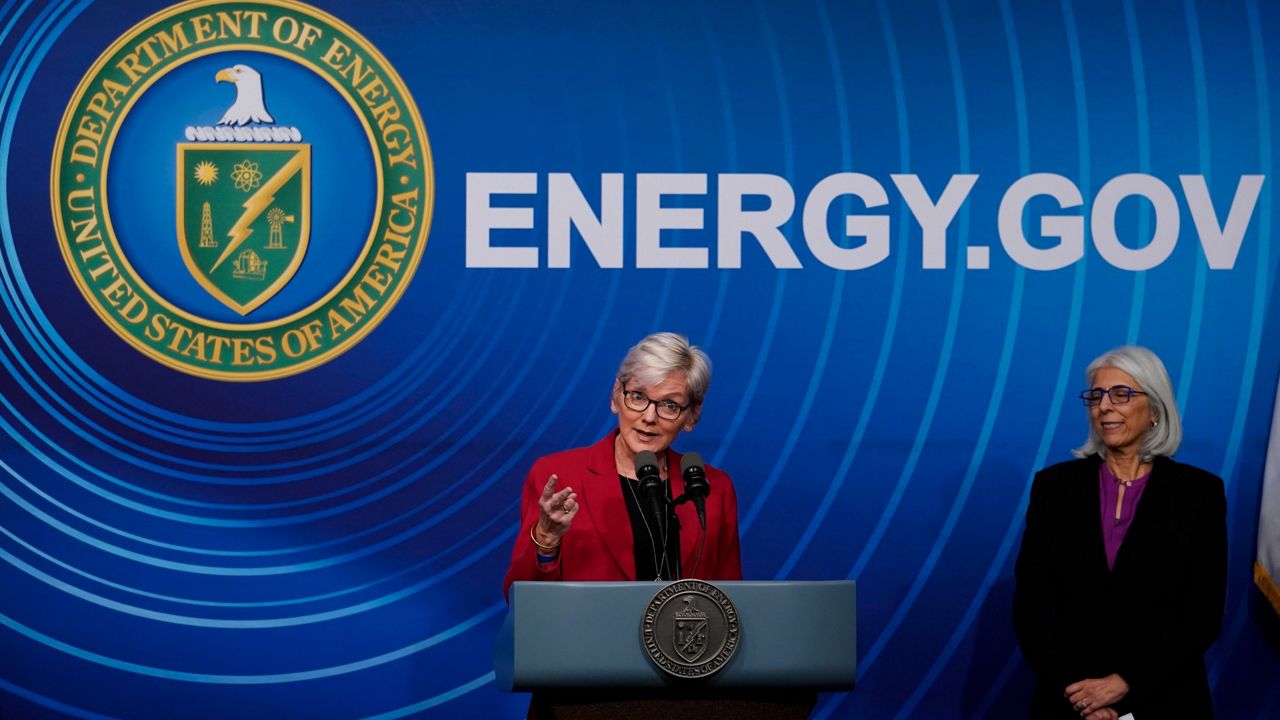U.S. researchers made a major scientific breakthrough last week that could someday produce an infinite source of carbon-free energy, federal officials announced Tuesday.
What You Need To Know
- U.S. researchers made a major scientific breakthrough last week that could someday produce an infinite source of carbon-free energy, federal officials announced Tuesday
- On Dec. 5, scientists at the National Ignition Facility at the Lawrence Livermore National Laboratory in California for the first time produced more energy in a fusion reaction than was used to ignite it
- Fusion works by pressing hydrogen atoms into each other with such force that they combine into helium, releasing enormous amounts of energy and heat
- Kim Budil, director of the Lawrence Livermore National Laboratory, however, said the advancement is likely still decades away from powering homes and businesses
On Dec. 5, scientists at the National Ignition Facility at the Lawrence Livermore National Laboratory in California for the first time produced more energy in a fusion reaction than was used to ignite it.
Fusion works by pressing hydrogen atoms into each other with such force that they combine into helium, releasing enormous amounts of energy and heat. It’s the same reaction that powers the sun and stars, and unlike other nuclear reactions, it doesn't create radioactive waste.
Billions of dollars and decades of work have gone into fusion research that has produced exhilarating results — but for just fractions of a second.
During the experiment, 192 high-energy lasers were shot toward a small capsule of hydrogen — about the size of a peppercorn — heating it to over 3 million degrees Celsius, briefly simulating the conditions of a star and igniting the capsule, Jill Ruby, undersecretary for nuclear security at the U.S. Energy Department, explained during a news conference in Washington.
About two megajoules of energy were directed at the capsule, and about three megajoules were produced, said Marvin Adams, the deputy administrator for defense programs at the National Nuclear Security Administration.
“Along with this, we have taken the first tentative steps towards a clean energy source that could revolutionize the world,” Ruby said.
The achievement came after more than 60 years of global research and development, and billions of dollars of investment, officials said.
“Our pursuit of fusion ignition over the past decade at NIF was an incredibly ambitious technical goal,” said Kim Budil, director of the Lawrence Livermore National Laboratory. “Many said it was not possible. The laser wasn't energetic enough, the targets would never be precise enough, or modeling and simulation tools we're just not up to the task of this complex physics.
“This achievement opens up new scientific realms for us to explore and advance as our capabilities for our national security missions,” Budil added. “It demonstrates the power of U.S. leadership in science and technology and shows what we're capable of as a nation.”
Budil, however, said the advancement is likely still decades away from powering homes and businesses.
“There are very significant hurdles not just in the science, but in technology,” she said. “This is one igniting capsule one time, and to realize commercial fusion energy, you have to do many things. You have to be able to produce many, many fusion ignition events per minute, and you have to have a robust system of drivers to enable that.
“I don't want to give you a sense that we're going to plug the NIF into the grid. That is definitely not how this works.”
The net energy gain achievement applied to the fusion reaction itself, not the total amount of power it took to operate the lasers and run the project. For fusion to be viable, it will need to produce significantly more power and for longer. Budil said it required about 300 megajoules of energy to power the lasers in last week’s experiment.
Energy Secretary Jennifer Granholm said the breakthrough was possible due to an “incredible amount of U.S. public dollars,” but added the Biden administration believes it will require both public and private research for fusion energy to reach a commercial level.
"It's the first time it has ever been done in a laboratory, anywhere in the world," Granholm said. "Simply put, this is one of the most impressive scientific feats of the 21st century."
"Or, as the president might say ... this is a B.F.D.," she joked, referencing Biden's "hot mic" comment to President Barack Obama after the passage of the Affordable Care Act in 2010.
Another approach to fusion energy turns hydrogen into plasma, an electrically charged gas, which is then controlled by humongous magnets. This method, known as magnetic fusion, is being explored in France in a collaboration among 35 countries called the International Thermonuclear Experimental Reactor as well as by researchers at the Massachusetts Institute of Technology and a private company.
Budil said the foundational technology needed to scale up toward a power plant is further along in the magnetic fusion community than it is for inertial fusion, the method being explored at the National Ignition Facility.
“If we could not ignite capsules in the laboratory, you could not see a pathway to an inertial confinement fusion energy plant,” she said. “So this was a necessary first step.”
Adams said the fusion energy could also improve national security because it would lead to lab experiments on defense programs that don’t require nuclear explosive testing and boost the United States’ credibility by demonstrating “world-leading expertise in weapons [and] weapons-relevant technologies.”
The Associated Press contributed to this report.



